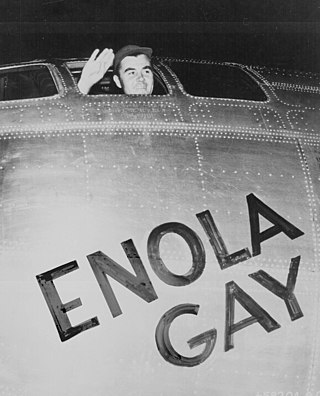
The Enola Gay is a Boeing B-29 Superfortress bomber, named after Enola Gay Tibbets, the mother of the pilot, Colonel Paul Tibbets. On 6 August 1945, during the final stages of World War II, it became the first aircraft to drop an atomic bomb in warfare. The bomb, code-named "Little Boy", was targeted at the city of Hiroshima, Japan, and destroyed about three-quarters of the city. Enola Gay participated in the second nuclear attack as the weather reconnaissance aircraft for the primary target of Kokura. Clouds and drifting smoke resulted in Nagasaki, a secondary target, being bombed instead.
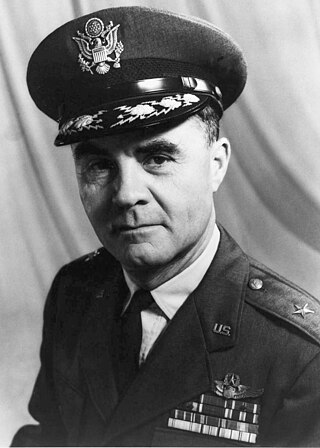
Paul Warfield Tibbets Jr. was a brigadier general in the United States Air Force. He is best known as the aircraft captain who flew the B-29 Superfortress known as the Enola Gay when it dropped a Little Boy, the first of two atomic bombs used in warfare, on the Japanese city of Hiroshima.

Charles William Sweeney was an officer in the United States Army Air Forces during World War II and the pilot who flew Bockscar carrying the Fat Man atomic bomb to the Japanese city of Nagasaki on August 9, 1945. Separating from active duty at the end of World War II, he later became an officer in the Massachusetts Air National Guard as the Army Air Forces transitioned to an independent United States Air Force, eventually rising to the rank of major general.

Morris Richard Jeppson was a Second Lieutenant in the United States Army Air Forces during World War II. He served as assistant weaponeer on the Enola Gay, which dropped the first atomic bomb on the city of Hiroshima, Japan on August 6, 1945.

Project Alberta, also known as Project A, was a section of the Manhattan Project which assisted in delivering the first nuclear weapons in the atomic bombing of Hiroshima and Nagasaki during World War II.

Wendover Air Force Base is a former United States Air Force base in Utah now known as Wendover Airport. During World War II, it was a training base for B-17 and B-24 bomber crews. It was the training site of the 509th Composite Group, the B-29 unit that carried out the atomic bombings of Hiroshima and Nagasaki.
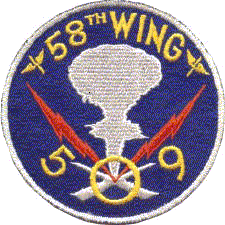
The 509th Composite Group was a unit of the United States Army Air Forces created during World War II and tasked with the operational deployment of nuclear weapons. It conducted the atomic bombings of Hiroshima and Nagasaki, Japan, in August 1945.
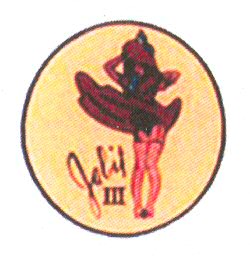
Jabit III (alternately spelled Jabbitt III was the name of a B-29 Superfortress participating in the atomic bomb attack on Hiroshima on August 6, 1945. Assigned to the 393d Bomb Squadron, 509th Composite Group, Jabit III was used as a weather reconnaissance aircraft and flew to the city of Kokura, designated as the secondary target, before the final bombing to determine if conditions were favorable for an attack.

Silverplate was the code reference for the United States Army Air Forces' participation in the Manhattan Project during World War II. Originally the name for the aircraft modification project which enabled a B-29 Superfortress bomber to drop an atomic weapon, "Silverplate" eventually came to identify the training and operational aspects of the program as well. The original directive for the project had as its subject line "Silver Plated Project," but continued usage of the term shortened it to "Silverplate".
"Manhattan Project" is a 1985 song by Canadian progressive rock band Rush, named after the WWII project that created the first atomic bomb. The song appeared on Rush's eleventh studio album Power Windows in 1985. "Manhattan Project" is the third track on the album and clocks in at 5:07. Despite not being released as a single, it did reach #10 on the U.S. Mainstream Rock Chart.
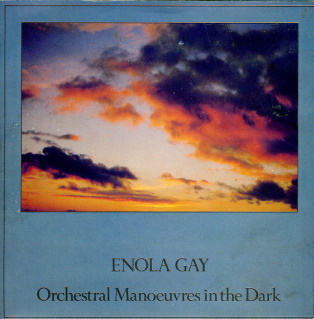
"Enola Gay" is an anti-war song by the English electronic band Orchestral Manoeuvres in the Dark (OMD), and the only single taken from their second studio album Organisation (1980). Written by lead vocalist and bassist Andy McCluskey, it addresses the atomic bombing of Hiroshima by the aircraft Enola Gay on 6 August 1945, toward the conclusion of World War II. As is typical of early OMD singles, the song features a melodic synthesizer break instead of a sung chorus.

Jacob Beser was a lieutenant in the United States Army Air Forces who served during World War II. Beser was the radar specialist aboard the Enola Gay on August 6, 1945, when it dropped the Little Boy atomic bomb on Hiroshima. Three days later, Beser was a crewmember aboard Bockscar when the Fat Man bomb was dropped on Nagasaki. He was the only person to have served as a strike crew member of both of the 1945 atomic bomb missions.

The Beginning or the End is a 1947 American docudrama film about the development of the atomic bomb in World War II, directed by Norman Taurog, starring Brian Donlevy, Robert Walker, and Tom Drake, and released by Metro-Goldwyn-Mayer. The film dramatizes the creation of the atomic bomb in the Manhattan Project and the bombing of Hiroshima.

Robert Alvin Lewis was a United States Army Air Forces officer serving in the Pacific Theatre during World War II. He was the co-pilot and aircraft commander of the Enola Gay, the B-29 Superfortress bomber which dropped the atomic bomb Little Boy on the Japanese city of Hiroshima on August 6, 1945.

Bockscar, sometimes called Bock's Car, is the United States Army Air Forces B-29 bomber that dropped a Fat Man nuclear weapon over the Japanese city of Nagasaki during World War II in the second – and most recent – nuclear attack in history. One of 15 Silverplate B-29s used by the 509th, Bockscar was built at the Glenn L. Martin Aircraft Plant at Bellevue, Nebraska, at what is now Offutt Air Force Base, and delivered to the United States Army Air Forces on 19 March 1945. It was assigned to the 393rd Bombardment Squadron, 509th Composite Group to Wendover Army Air Field, Utah, in April and was named after captain Frederick C. Bock.
This is a list of cultural products made about the atomic bombings of Hiroshima and Nagasaki. It includes literature, film, music and other art forms.
Charles Donald Albury was an American military aviator who participated in both atomic bombings of Hiroshima and Nagasaki. He was the co-pilot of the United States Army Air Forces B-29 bomber known as the Bockscar during the mission that dropped the atomic bomb on Nagasaki on August 9, 1945. The bombing of Nagasaki killed an estimated 40,000 people instantly, and led to Japan's unconditional surrender on August 14, 1945, ending World War II.

Operations Order No. 35 was an order issued by the 509th Composite Group on August 5, 1945 for the atomic bombing mission on Hiroshima, Japan, during World War II. The Order was signed by Operations Officer Major James I. Hopkins, Jr. who would later fly Big Stink in the August 9, 1945 atomic bombing raid on Nagasaki, Japan, under the call sign "Dimples 90".

Enola is an English feminine given name often taken from the English word alone spelled backwards. It is also an English spelling of a Cherokee name meaning black fox.















